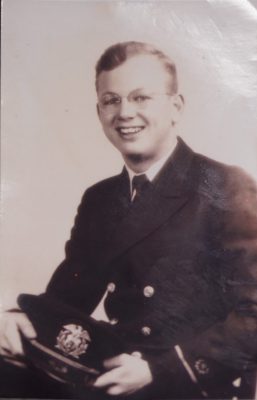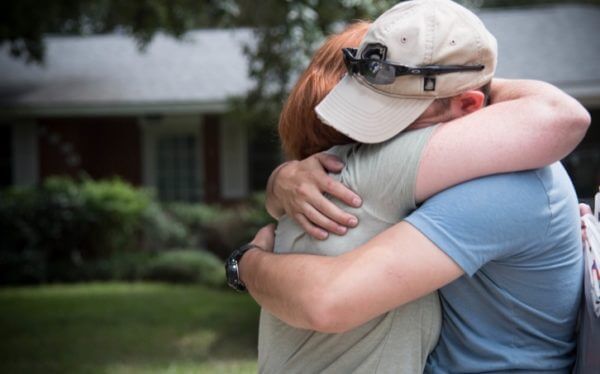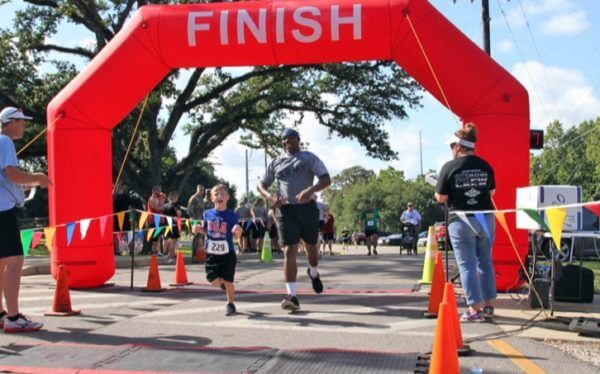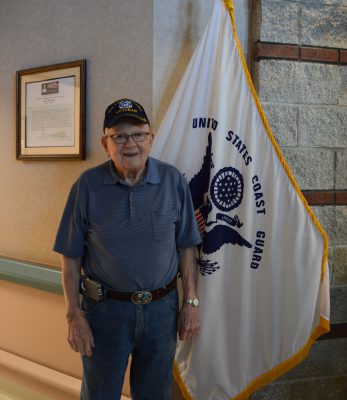John M. Rust, 2LT, United States Merchant Marines, Coast Guard and Army
FOR IMMEDIATE RELEASE
MARCH 7, 2018
“I ain’t no hero, but I did my time,” says U.S. Merchant Marine, Coast Guardsmen, and Army Soldier John M. Rust. And time he did. His voyages while in service to our country led him to unknown training facilities, all across the Atlantic Ocean, and with a unique skillset.
Rust enrolled in the United States Merchant Service (USMS) through the New Orleans Office in 1944. The USMS was established in 1938 under the provisions of the Merchant Marine Act of 1936. The mission of the organization was to train people to become officers and crewmembers on merchant ships that formed the United States Merchant Marine per Title 46 U.S. Code 51701.
He was selected for training as a Warrant Radio Electrician and attended six months of training at Maritime School on Hoffman Island, New York. Upon completion of his training, he obtained a Second Class Telegraphers License (FCC).
During that time, he learned Morse code which he says was drilled in his brain pretty solidly because, at 91 years young, he still remembers the code and occasionally communicated with his granddaughter that way.
Morse code is a method of transmitting text information as a series of on-off tones, lights, or clicks that can be directly understood by a skilled listener or observer without special equipment. It is named for Samuel F. B. Morse, an inventor of the telegraph.
Rust was activated in Feb. 1945 and sent to Santa Catalina Island, one of California’s Channel Islands, for six weeks of boot camp.
It is not widely known, but soon after the U.S. entered World War II on Dec. 7, 1941, authorities declared the island a Federal Military Zone and Catalina’s tourism-dependent economy ground to a halt.
In response, the island reinvented itself as a training camp for spies, commandoes, Merchant Marines, Coast Guard recruits, and other uniformed service members. Vacant hotels became barracks. Empty marinas, yacht clubs, and even the Chicago Cubs’ spring training ballpark were transformed into simulated warzones. That island is where Rust trained.
One of his most noteworthy accomplishments, which he accomplished at the age of 18, was becoming the sole communicator aboard the SS Harold L. Winslow. The Winslow was a Liberty ship, which was a type of mass-produced cargo ship built to inexpensively meet the United States maritime transport needs during WWII.
During that challenging but rewarding time, Rust set sail all across the Atlantic to places like Belgium, Germany, and England.
In the summer of 1946, Rust joined the SS Henry War Beecher doing the same type of job while also sailing with them across the Atlantic.
He did a great job there and was selected to attend Officer Candidate School. Unfortunately, his little brother, who was a U.S. Marine, was killed in Korea while he was in training. “That devastated me for the rest of my life,” he says of that dark time.
Rust served as a Communications Officer at the Battalion level for three years. Finally, he joined the T-2 Tanker SS Steens Mountain and sailed Coastal and South American runs until the summer of 1948 when he was honorably discharged from the military.
After his military career, he went back to school and became a Veterinarian. Dr. Rust loves animals and built a very successful practice caring for them for decades afterwards.
He married the love of his life at the age of 25. They were together for 30 years and had 4 beautiful children together.
Dr. Rust has been living at LDVA’s Southwest Louisiana Veterans Home for about 2 months and he says his arrival there was a “fortunate happenstance.”
He’d been struggling on his own for a while and decided to visit Jennings, La., a few months back. “I found my home here.”
“This is not a place you go to die,” says Rust. “You come here to live.”



